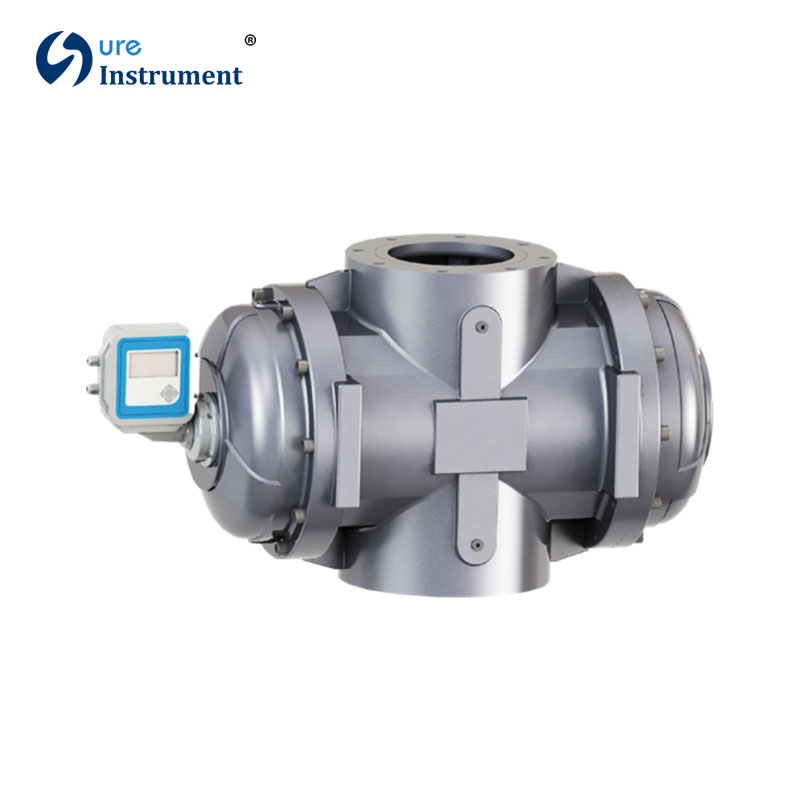There is a leading domestic manufacturer of new energy materials in China, specializing in the research and development and production of nickel cobalt manganese (NCM) lithium battery precursors and cathode materials. With the rapid growth of the new energy vehicle market, the company urgently needed to enhance the automation level of its production lines to ensure precise measurement of parameters such as medium flow rate, liquid level, and pressure during the production process, thereby improving product quality and production efficiency.Project Requirements1. Precision Measurement Needs: The production of lithium battery materials involves highly corrosive media such as nickel sulfate and cobalt sulfate, requiring flow meters with high precision and corrosion resistance.2. Multi-Scenario Adaptability: The production line covers complex process links such as batching, reaction, and centrifugal washing, necessitating a variety of instruments to match different media (liquids, gases, steam).3. Quick Delivery and After-Sales Service: The project schedule was tight, demanding that the supplier have the capability for rapid delivery and timely technical support.SolutionSure Instrument designed a comprehensive solution for the complex conditions of the customer's production line, focusing on technical adaptability, environmental tolerance, and system integration, as follows:1. Electromagnetic Flow Meter (LDG Series) - Precision Measurement of Corrosive MediaTechnical Adaptability:PTFE Lining and Hastelloy C276 Electrodes: The use of PTFE lining and Hastelloy C276 electrodes ensures resistance to highly corrosive liquids such as nickel sulfate and cobalt sulfate (pH value ≤2), preventing measurement deviations caused by electrode corrosion.Dual-Frequency Excitation Technology: By alternating high and low-frequency excitation, this technology suppresses slurry noise interference, allowing stable output even at low flow rates of 0.3 m/s, with a precision of 0.2 grade, ensuring that the batching ratio error is ≤0.3%.Configuration Options:Integral Threaded Connection Type: Suitable for feed pipes of small reactors (DN15~DN50) with compact installation space.Split Insertion Type: Designed for large liquid storage tanks (DN300~DN1200), supporting remote display and control.2. Liquid Turbine Flow Meter (LWGY Series) - Quantitative Control of High-Pressure Pure Water and Liquid AlkaliEnvironmental Tolerance:High-Pressure Clamp Design: The sensor's no-opening structure can withstand pressures up to 42 MPa, matching high-pressure liquid alkali conveying pipelines (DN25~DN100) and eliminating leakage risks.Sanitary 316L Stainless Steel Material: Used in pure water circulation systems, it meets GMP cleanliness standards, preventing medium contamination.Functional Advantages:Pulse Frequency Signal Output: Linked with the customer's PLC system, it enables automatic quantitative injection (e.g., pure water addition within ±0.5L), enhancing batch consistency.High Repeatability of 0.02%: Long-term operation without drift, reducing calibration frequency and lowering annual maintenance costs by 25%.3. Steam Vortex Flow Meter (LUGB Series) - High-Temperature Steam Flow MonitoringHigh-Temperature and Anti-Vibration Design:Temperature and Pressure Flange Structure: Made of high-temperature alloy materials (withstanding up to 350℃), it matches steam heating pipelines for reactors (DN50~DN200) and withstands saturated steam pressure of 1.6 MPa.Anti-Vibration Software Algorithm: The digital chip filters mechanical vibration signals in real-time (with anti-vibration capability up to 1.0g), preventing measurement fluctuations caused by production line vibrations.Precision Measurement:Standard Nozzle Design: Extends the lower flow rate limit to 2.5 m/s, covering low-load steam conditions, with a precision of 1.0 grade and steam usage statistics error of ≤1.5%.4. Pressure Transmitter - Full-Process Pressure MonitoringMulti-Scenario Adaptability:Diffused Silicon Sensor: With a precision of 0.1%, it is used for absolute pressure monitoring of reactors (010 MPa) and pipeline gauge pressure control (-0.12.5 MPa), with real-time feedback to the DCS system.Explosion-Proof Design (Ex d IIC T6): Suitable for flammable gas environments (e.g., ammonia pipelines), certified by ATEX to ensure safe production.Intelligent Functions:HART Protocol Communication: Supports remote parameter adjustment and fault diagnosis, reducing manual inspection frequency by 30%.5. System Integration and Auxiliary InstrumentsRadar Level Meter:80GHz High-Frequency Millimeter-Wave Radar: With a blind zone of only 0.05m, it accurately monitors liquid levels in storage tanks (precision ±2mm), preventing overflow or empty tank risks.pH Meter:Membrane-Free Three-Electrode Method: Online monitoring of reactor pH values (range 0~14) with a precision of ±0.02pH, linked to the dosing system via a 4-20mA signal to ensure stable reaction processes.Data Interoperability:RS485/Modbus Protocol: All instrument data is integrated into the customer's central control platform, enabling full-process production visualization and abnormal alarm response in less than 1 second.Highlights of the SolutionCustomized Selection: Matching different materials and models for corrosive, high-temperature, and high-pressure scenarios, extending equipment life to over 8 years.Quick Delivery: Leveraging the automated production line in Qingxian Base (with a weekly capacity of 2,000 units), 300 instruments were delivered within 3 days to meet the urgent project needs.Achievements and BenefitsPrecision Improvement: Flow measurement error ≤0.5%, significantly improving production batching consistency and increasing product pass rate by 15%.Efficiency Optimization: Automated instruments reduce manual intervention, enhancing overall production line efficiency by 20%.Cost Savings: Corrosion-resistant design extends instrument life, reducing maintenance costs by 30%.Project Expansion: Building on the successful experience of the first phase, Sure Instrument consecutively won bids for the second and third phases, delivering a total of 350 electromagnetic flow meters and 180 liquid turbine flow meters.Sure Instrument's Core AdvantagesTechnical Leadership: Patent technologies + in-house R&D laboratory to ensure product adaptability to complex industrial scenarios.Intelligent Manufacturing: Annual production capacity of 100,000 instruments, supporting rapid customization and bulk delivery.
Read More>>


